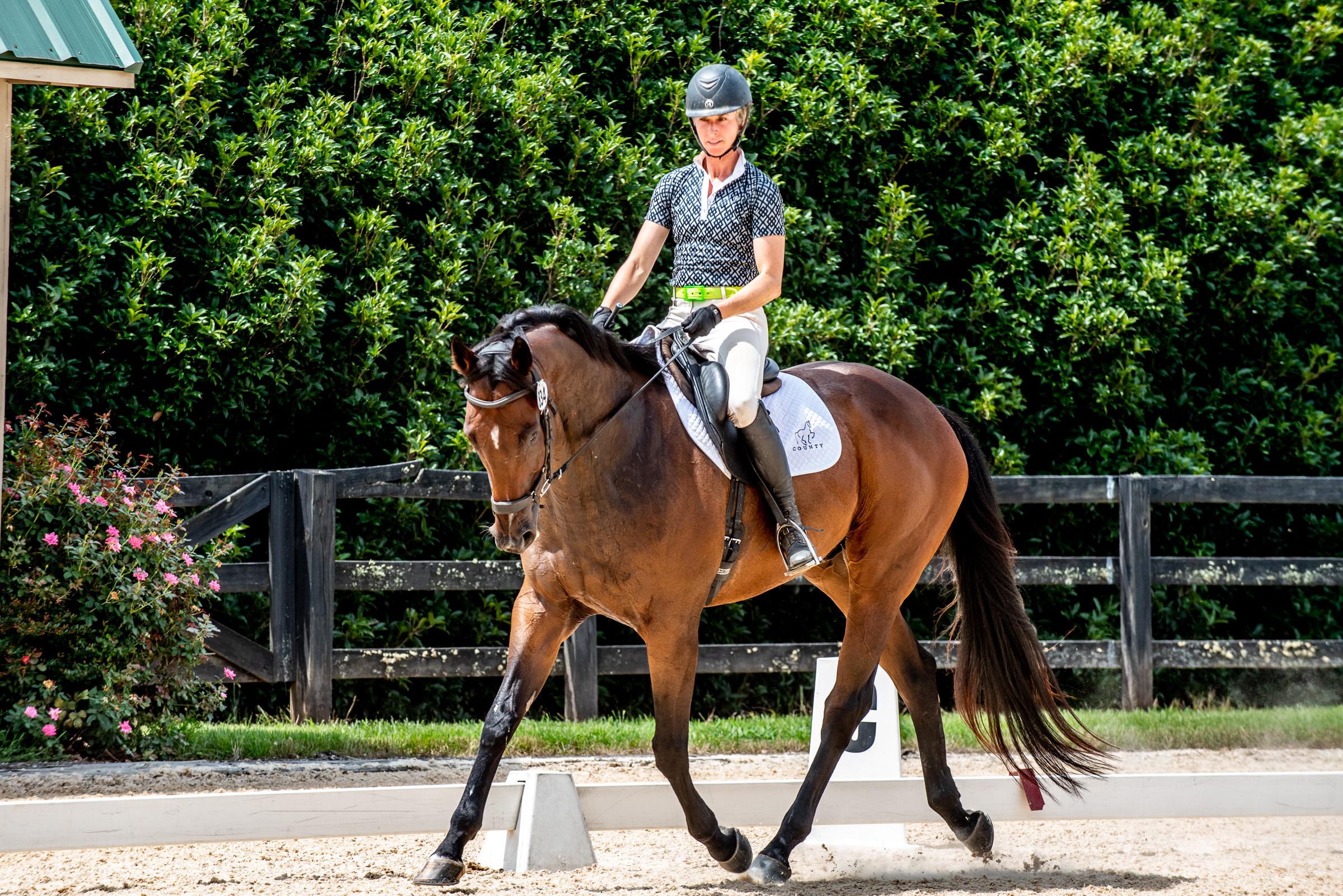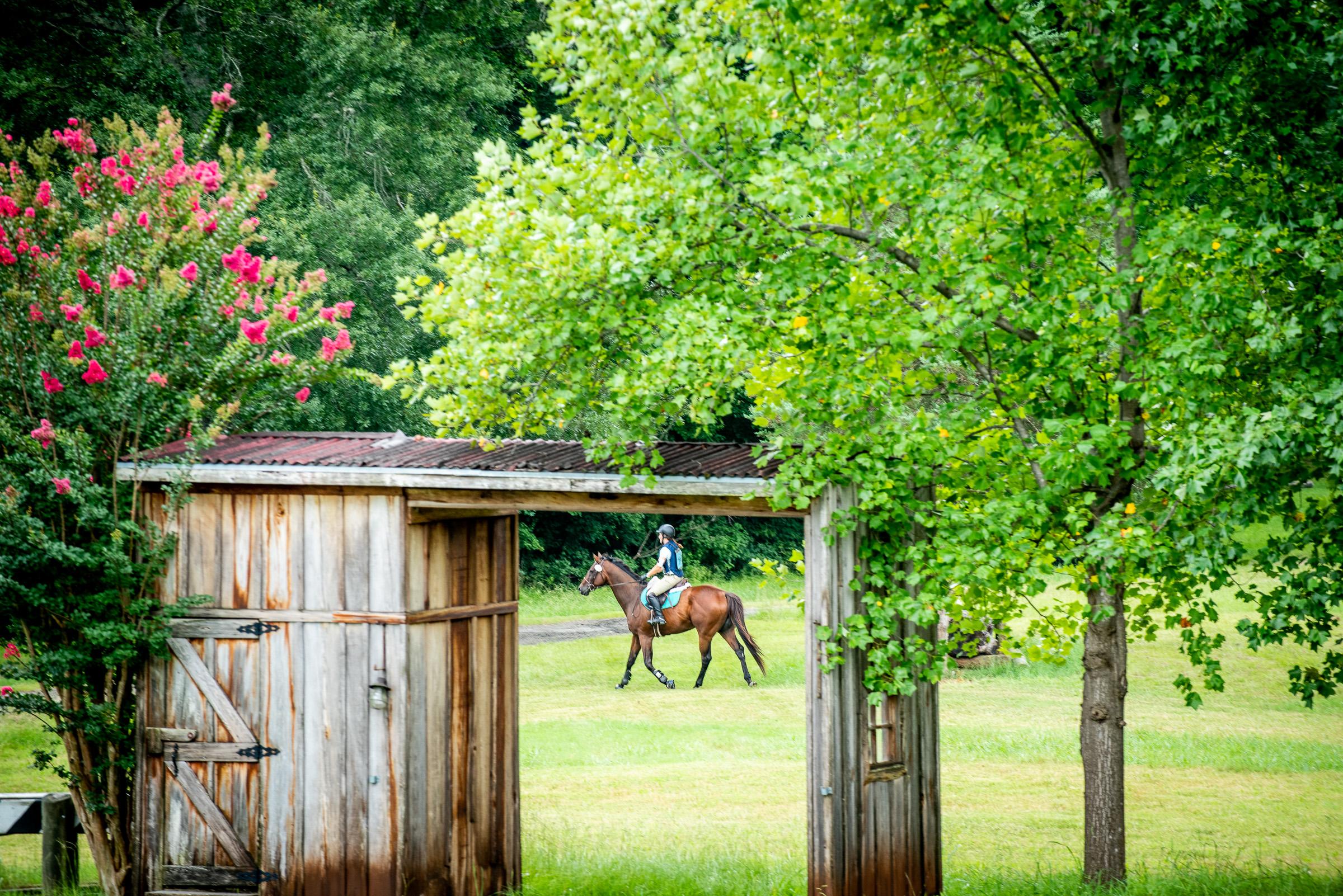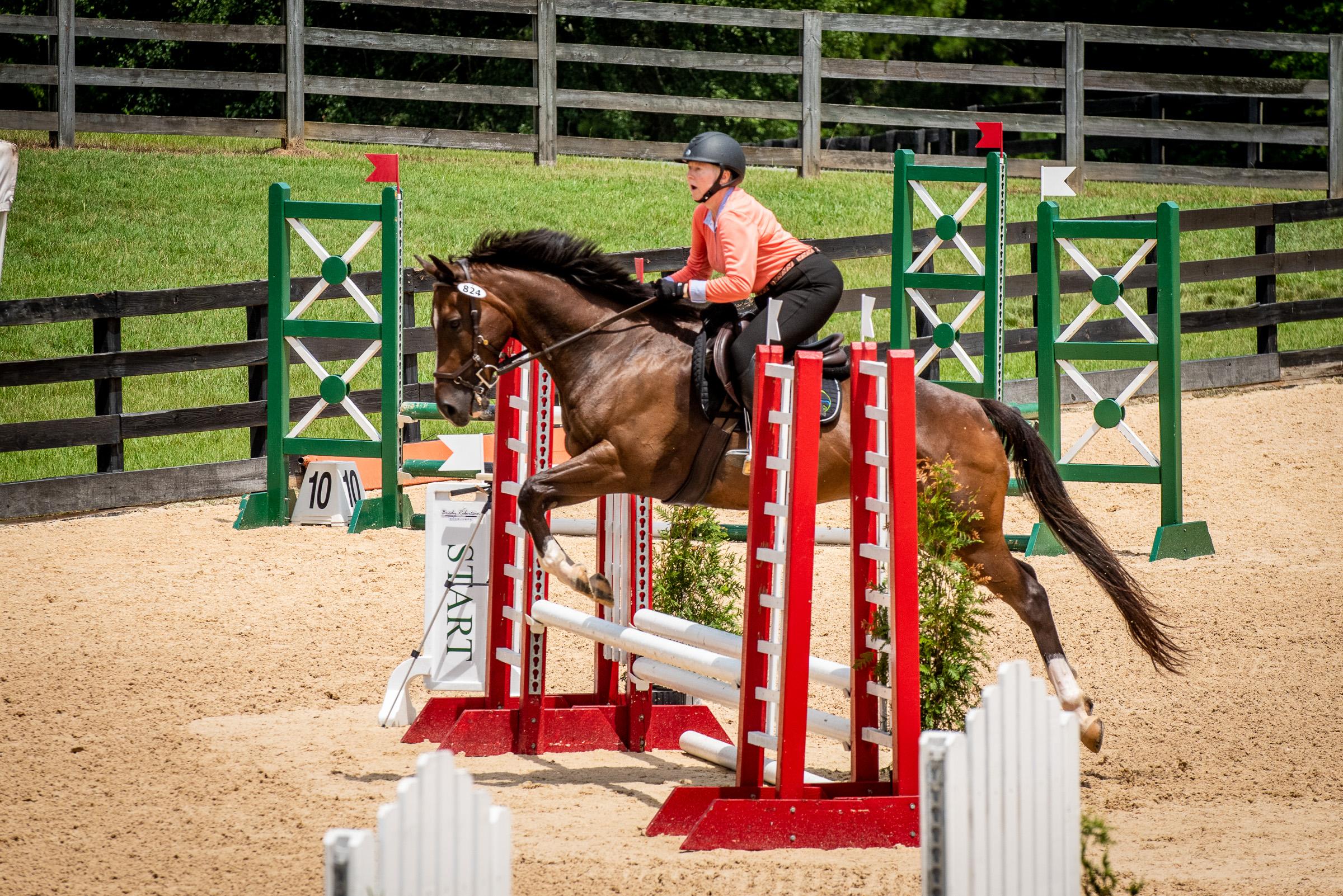
Thoroughbred Logic: Low Bar, High Hopes
“One trick to showing and enjoying it — and therefore a trick to owning, loving, and competing your Thoroughbred (or really any horse for that matter) is to keep the bar low and set your hopes high… and then adjust up or down as you go.”
Welcome to the next installment of Thoroughbred Logic. In this weekly series, Anthropologist and trainer Aubrey Graham, of Kivu Sport Horses, will offer insight and training experience when it comes to working with Thoroughbreds (although much will apply to all breeds). This week Aubrey discusses seasoning horses when it comes to showing.
This past weekend, I brought a bunch of students and three horses to Poplar Place Farms to compete. The weather was intense and unfortunate circumstances abounded, but the memorable part of the weekend (well, besides Louis’ cross country run in the middle of a washout) was the amount that the whole team kept smiling and saying, “I’m so proud of _____” (insert horse name here).
One trick to showing and enjoying it — and therefore a trick to owning, loving, and competing your Thoroughbred (or really any horse for that matter) is to keep the bar low and set your hopes high… and then adjust up or down as you go.

Yukon Johnny being outstandingly good (and blowing my hopes out of the water) in dressage at Poplar, finishing on a 23.2. Photo by Cora Williamson.
This is what I love about bringing the young or green ones along. The pressure is off to perform immediately. Everything is incremental, and the approach shifts away from needs and expectations to hard work, humility, and joy at what evolves. In other words, this morphs the perspective from “the changes were not perfect, dammit” to “that second change was the best he has given me in weeks!”
To that degree, I finished up two Beginner Novice three-phases on extremely different Thoroughbreds in extremely different weather and footing and managed both the worst score and the best score of my career. Yukon Johnny finished clear and inside time in very wet footing to end on his 23.2; Unbridled Bayou (Louis), my four year old RRP Makeover hopeful saw a BN cross country run for the first time in the middle of a complete deluge to finished on a 120. The best part? I think I am equally proud of both.
So here are a few snippets of show season advice for surviving it with these smart, extremely athletic, often quirky horses:
Stay in and stay on is never a bad starting goal for dressage (or any phase, honestly).
The idea here is to keep the bar low and achievable, while having hopes (not expectations) for positive experiences and productive moments. Beans (Giant’s Gateway) competed for the first time this week (Tadpole Three-Phase). When I left the dressage arena, I was met with, “well… that was… ummmm….” and I laughed and filled in, “Technically, not particularly good.” But I was thrilled with him. The recently-restarted redhead had never seen a dressage arena and he bravely trotted in, didn’t blink at the judge’s box, had no issue with the ankle-high white fencing, and completed the full test. Sure, he occasionally mimicked a giraffe and was not fully connected the whole time, but in each movement there were moments of potential — of showing how he will be able to go with more time and training. AND we stayed in and stayed on. Good boy.

Beans (Giants Gateway) was literally grumbling at this point, but being a super good boy for this part of the movement. Photo by Pacey Gilham.
Prepare your horse well.
Competing starts long before you get to the show. For a horse to handle a busy warmup arena, being alone on course, or hack about between classes, they need the confidence and skill sets to hold it together. Yes, you only get some of that by doing it (and schooling shows play such an important role here), but a lot of those skills are planted and cultivated through work and exposure at home. A few examples:
- Horses are running in the field next to the arena. Good. Keep riding.
- Three people entered the home arena and it is getting busy. Good. Practice left shoulder to left shoulder and get warm-up arena prepared.
- Dogs are running around, someone opened an umbrella, baby strollers are parked near your path to the ring… stellar, go desensitize.
- Practice all the elements of the show to the best of your ability at home — jump related distances, practice square corners, get solo canter work through the fields and on hills. Building that confidence at home will allow it to translate to the show, and your horse will be grateful (even if they are not thrilled while learning about umbrellas).

Marilyn Kilchriss trots Sir Sidney through his cross country course at Poplar. Hacking out alone at home builds confidence to address solo time on XC. Photo by author.
On that note, prepare by riding in all weather.
It is hot at shows. It rains. The wind can be terrible. This year, at the Poplar shows alone, we have had 40 degrees and 40mph wind, 95 degrees and high humidity, and rain that has made it look like the arc next to the water complex might actually set sail. If you don’t school in at least some of this at home, competing becomes that much harder.
Wind is a fun one. You might have a kite, you might not. For most of the off-trackers at my farm, I have found that, surprisingly, the wind doesn’t impact their rides. But you won’t know that if the wind keeps you out of the saddle at home. Moreover, if your footing holds, jump when it is wet. Obviously, stay horse-first in how you decide to address weather challenges. That said, it is easier for a horse to have confidence jumping in a wet ring at a show when they have done so before. I have found my Thoroughbreds to be catty and surefooted, but I want to know what the legs are like under me before I let them canter down a slick hill to a solid fence.
Set the bar so that shows are places to learn, not just compete.
For Thoroughbreds, shows and the track certainly have commonalities — busy, buzzy environments, loudspeakers, music, lots of horses out and about at once. Getting them accustomed to the “this is not a place where we go fast” might take some time and a sense of humor. Good. Set your bar accordingly and keep going (and see the next bullet point).
(As a fun aside here, at a local show, the classical music soundtrack includes the “Call To Post.” I laugh every time as inevitably there is a Thoroughbred somewhere in dressage or warming up for their test and I wonder how their memory puts it all together.)

Just a great shot of Beans (Giant’s Gateway) mimicking a giraffe as he figures out how to hold it together in dressage. Photo by Pacey Gilham.
Let the struggles at the show assign your homework.
I do admittedly love dressage because it tells me exactly what I need to work on. But I also love thinking through the warmups and competition rounds, as well as the photos and video, to find places to improve — to find homework. I try to identify what is needed and then find ways to work on it when at home.
Louis’ confidence in his connection has been a challenge since he began showing this spring. At home, I have forced myself to work more on my light, but connected contact and put in place daily exercises to get him to ride off his outside rein. Shows similarly dictated homework for Tuck. He needed a more forward-going footwork so that he does not need to add a stride at the base. At home we built grids and bounces, and set take off poles to strengthen his hind end and give him confidence on where his feet need to be.

Louis (Unbridled Bayou) showing off the progress in his contact that has come from his homework. Still more work to do, but good boy. Photo by Cora Williamson.
When things don’t go as planned, nod to the issue but focus on the positive.
This is literally the most important piece of advice I can provide. Rarely does anything go as planned – especially with young, green Thoroughbreds. When it is all “good” — yay! Time for a celebratory drink! But when the weather (and the rain) goes sideways, shoes fall off, your horse becomes a dragon for dressage, a new jump is cause for a refusal, or a chaotic warmup arena provides more stress than preparation, it is time to both recognize the elements that contributed to challenge (and go put together homework), and focus on what was amazing instead.

Kara Rogers pilots Birdie Bob through his Starter course at Poplar sans front shoes (lost ’em on XC the day before and no farrier was to be found). Ever horse first, she withdrew before cross-country, but I’m quite proud of them for riding through the challenges and making progress despite imperfect conditions. Photo by Pacey Gilham.
So here we go back to Louis in the downpour. Poor kiddo has never ridden in more than a light rain (that’s my fault) and has not jumped XC in it. So, no time like the present. I approached each fence with the “if this gets too rough, we can retire” mindset overlaid with “you can do it.” And he did. We had a stop at the ditch (which we would likely have had anyway) and at two other fences, where seeing the takeoff was dicy. But I felt him get braver as we went, and at the end of the day, we made it through the finish flags drenched through and through, but with positive experience and excitement for the next (hopefully less damp) run. We headed home with an assignment to work on ditches and keeping his shoulders straighter to the fence, but I’m hanging onto how brave and ridable he was despite the conditions. Damn I’m proud of that little horse.
And finally, make sure that your bar and your hopes align with those your trainer has for you and your horse.
Finding a trainer that works for you and your horse can be tough. Hell, I get it, I’m not for everyone. But your team and your trainer can make or break your show experience. If you’re there to win-win-win, make sure your trainer is too. If you’re there following advice like this where shows are about learning, laughing at the bloopers, and assigning homework to make progress — find a trainer that thinks similarly. This may be easier said than done. But the amount of stress that is removed from horse and rider when definitions of success align is surprisingly sizable.

Part of Team Kivu hangs out in the torrential rain watching Louis get through XC. I’m lucky to have these folks (and the rest of the not-featured team). Photo by Cora Williamson.
Regardless of whether you win or lose, score the best you have or the worst (or do both within 30 minutes of each other…), showing should be fun, positive, and help build your connection with your horse. Then go home and put more work in. Hell, it is a good season for weekday rides sweating through the homework so weekends can be spent being proud of your pony and your progress. The takeaway: Keep the bar low, your hopes high and always kick on.






